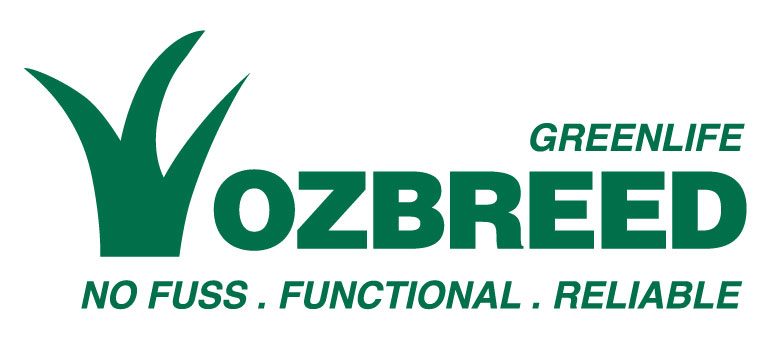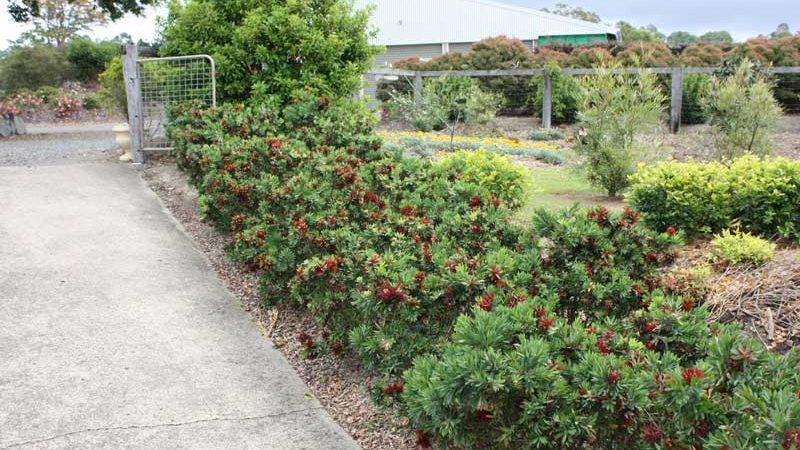Roadside verges in New Zealand present a unique set of challenges for plant growth. From pollution and soil compaction to limited maintenance budgets, these conditions require plants that are exceptionally hardy and resilient.
In this article, we’ll explore why roadsides are tough growing environments and the essential characteristics plants must possess to thrive in such positions. At the end of the article, we’ll provide a list of favourite plants among landscape architects for roadside positions.

One of the toughest roadside plants of all time is Tanika™ Lomandra.
The Challenges of Roadside Growing Conditions
Pollution
Vehicles emit a variety of pollutants, including exhaust fumes and leaked oil that can be toxic to plants. This pollution not only inhibits plant growth but can also reduce the overall health and longevity of roadside vegetation.
Soil Issues
Vehicles and heavy machinery may occasionally drive over the roadside, causing significant compaction issues. On top of this, uncovered soils (especially clayey soils) rapidly deteriorate and poor soils are rarely amended on roadsides. Compacted soil has poor aeration and reduced water infiltration, which limits root growth and makes it difficult for plants to establish themselves. On the other hand, sandy soils easily become hydrophobic and prevent water penetrating the surface.
Disturbance and Erosion
Roadsides are subject to frequent disturbances from maintenance activities such as mowing, herbicide sprays and construction work. Additionally, water runoff from roads can cause soil erosion, further destabilising the growing environment.
Heat and Drought Stress
The surface of roads absorbs and radiates heat, creating a hotter microclimate. This increased temperature, combined with potential water retention issues, can lead to drought-like conditions for plants growing nearby – even when there’s been reasonable rainfall.
Competition with Invasive Species
Roadsides are often colonised by invasive species that are more adaptable to harsh conditions. These invasive species can outcompete native plants for resources such as light, water, and nutrients.
Limited Maintenance Budgets
Limited budgets can exacerbate these challenges by restricting the amount of care and resources allocated to roadside vegetation. Infrequent maintenance, delayed problem resolution, minimal landscaping efforts, lack of soil improvement, insufficient weed control, and inadequate irrigation systems all contribute to the difficulties of sustaining healthy roadside plants.
Essential Characteristics for Roadside Plants
Given these challenging conditions, plants must possess several key characteristics to thrive along roadsides:
Drought Tolerance
Plants should be able to survive with minimal water, as irrigation is often limited and runoff from the road can reduce soil moisture availability.
Salt Tolerance
Especially in areas where roads are treated with salt during winter, plants must be resilient to high salinity levels in the soil.
Pollution Resistance
The ability to tolerate air and soil pollution from vehicle emissions and other sources is crucial for roadside plants.
Robust Root System
A strong and extensive root system helps plants anchor themselves in compacted or eroded soils and aids in nutrient and water uptake.
Heat Tolerance
Plants should be able to endure higher temperatures due to heat radiated from the road surface.
Low Maintenance Requirements
Plants that can thrive in neglect are best for roadsides. Opt for varieties without the need for frequent pruning, fertilising, or pest control, given the often limited maintenance budgets for roadside vegetation.
Growth Rates
Fast-growing plants can quickly establish themselves, outcompeting invasive species and stabilising the soil. On the other hand, fast-growing plants may require more frequent pruning. Opting for fast-growing compact plants with a defined mature size can be a happy medium.
Hardiness
Overall resilience to varying weather conditions, including wind, drought, heat, and temperature fluctuations, is essential.
Invasive Species Resistance
Plants should have a competitive edge against invasive species that might otherwise dominate the area.
Line of Sight
Preserving the visibility of drivers and pedestrians is of the utmost importance in certain roadside positions. On the other hand, screening noise, sound and exhaust fumes is appropriate in other roadside settings.
Tough Plants for Roadside Conditions
Tanika™ Lomandra longifolia ‘LM300’ PVR
Tanika™ Lomandra is a drought-tolerant, evergreen plant famous for its toughness and reliability in tough positions. It features an improved compact form with fine leaves and produces small yellow flowers in spring. The plant is soft to touch, making it child-friendly.
Size:
Tanika™ Lomandra typically grows to a height and width of 70-90 cm.
Position:
This plant thrives in full sun to moderate shade, as well as tolerating frost and drought. Just keep it away from wet feet.
Soil:
Tanika™ Lomandra is adaptable to different soil types, including sandy, sandy loam, and clay soils as long as they don’t experience waterlogged conditions. For best results, cover the soil with chunky mulch and ensure that the crown or base of the plant is not buried below soil or mulch level.
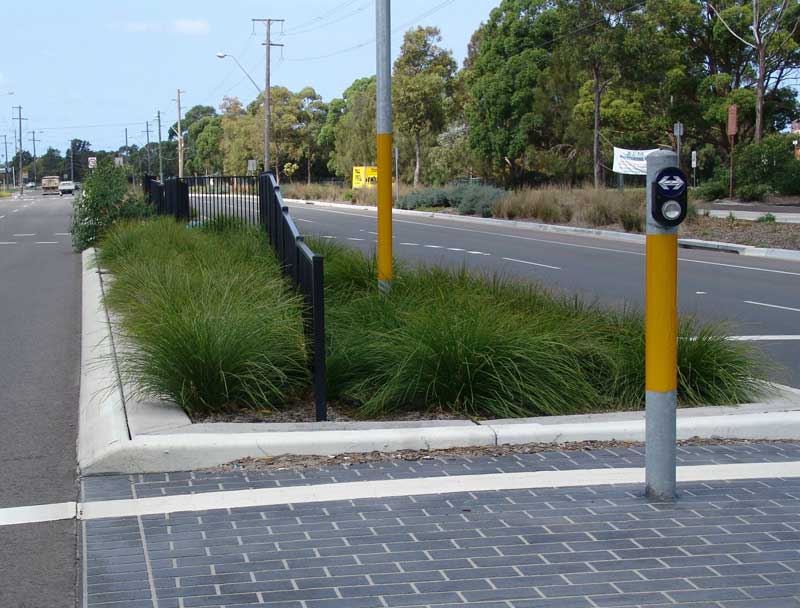
https://ozbreed.co.nz/plant-ranges/strappy-leaf-plants/tanika-lomandra/
Mundi™ Westringia fruticosa ‘WES05’ PVR
Mundi™ Westringia is a hardy and attractive ground cover shrub, known in Australia as being one of the toughest westringias ever bred. It can tolerate both drought and flooding, and produces masses of white flowers in spring, then continuing flowering for most of the year.
Size:
Mundi™ Westringia typically maintains a compact size, growing up to 40-50 cm in height and spreading out to approximately 1-1.5 metres in width.
Position:
This plant thrives in full sun to part shade, making it versatile for various roadside conditions. It is well-suited to New Zealand’s climates, tolerating both cold and drought conditions.
Soil:
Mundi™ Westringia adapts well to sandy to heavy clay soils. For optimal growth, cover bare soil with chunky mulch. Water as required for the first 8-13 weeks until established. Subsequently, this plant requires minimal maintenance. If needed, apply slow-release fertiliser in spring and prune 1-3 times a year after flowering for a tidier shape or less frequently for a natural appearance.
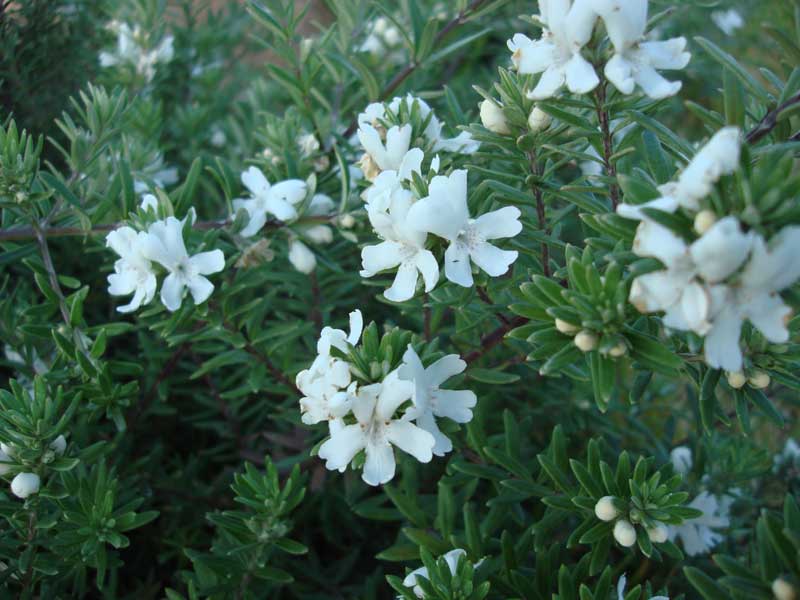
https://ozbreed.co.nz/plant-ranges/shrubs-and-ground-covers/mundi-westringia/
Blush™ Nandina domestica ‘AKA’ PVR
Blush™ Nandina is a captivating shrub with striking red foliage, which it displays for nine months of the year. It produces red new growth in spring and autumn when many other plants are green, adding vibrant colour to any roadside. This plant will not spread from seed, making it a safe choice around bushland areas.
Size:
Blush™ Nandina typically grows to a height of 60-70 cm, depending on conditions.
Position:
This plant thrives in full sun to moderate shade, making it adaptable to various roadside conditions. It is well-suited to New Zealand’s climates and can tolerate both cold and drought conditions once established.
Soil:
Blush™ Nandina grows well in well-drained soils. For optimal growth, water as required for the first 8-13 weeks until established. Use chunky mulch if the budget allows. If necessary, apply slow-release fertiliser in spring. The plant can be left unpruned or pruned to shape every three years, depending on aesthetic preferences and maintenance budget.

https://ozbreed.co.nz/plant-ranges/shrubs-and-ground-covers/blush-nandina/
Better John™ Callistemon viminalis ‘LJ1’ PVR
Better John™ Callistemon is a specially bred variety of Callistemon viminalis, known for its improved growth ease, quicker establishment, and superior foliage colour. It can tolerate wet feet and drought, frost and reflective heat. This makes it an excellent choice for enhancing roadside landscapes.
Size:
Better John™ Callistemon typically grows to a height of 60 cm to 1.2 metres and spreads to a width of 60 to 90 cm. Note that the plant may be slightly smaller under roadside conditions but can reach its full height potential in well-maintained environments. This low-growing shrub or hedge provides vegetation while preserving line of sight.
Position:
This plant thrives in full sun to part shade, is suitable for areas prone to drought, flooding, reflective heat and cold conditions.
Soil:
Better John™ Callistemon is best planted in sandy to well-drained soils. For optimal growth, water as required for the first 8-13 weeks until established. Use chunky mulch if the budget allows. If necessary, apply slow-release fertiliser in the spring. Pruning may be done every 3-4 years for a natural shape or every 2 years for a tidy hedge.
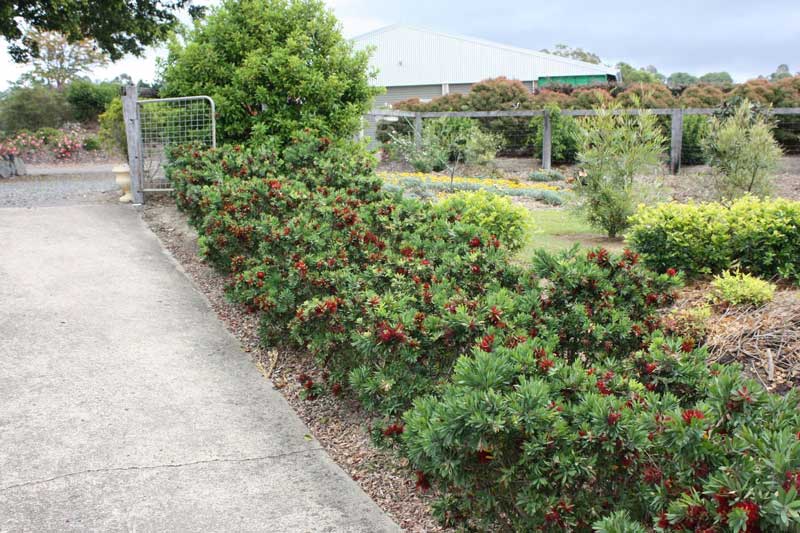
https://ozbreed.co.nz/plant-ranges/shrubs-and-ground-covers/better-john-callistemon/
Slim™ Callistemon viminalis CV01′ PVR
Slim™ Callistemon is a tall, narrow hedge or screen plant perfect for tight planting areas where a screen is required. It features a distinctive narrow growth habit with masses of flower buds that develop in spring and bloom throughout spring, summer, and autumn. This plant is hardy, tolerating temperatures down to -6 degrees Celsius without leaf burn.
Size:
Slim™ Callistemon grows up to 3 meters tall and spreads to a width of about 1.3 meters..
Position:
This plant thrives in full sun to part shade, is highly tolerant of drought and frost, and works well at the bottom or the top of a north or south facing slope.
Soil:
Slim™ Callistemon suits most soil types. For optimal growth, water as required for the first 8-13 weeks until established, and use chunky mulch if the budget allows. If necessary, apply slow-release fertiliser in spring. Pruning can be done 1-3 times a year after flowering to maintain a tidy shape, depending on your requirements.

https://ozbreed.co.nz/plant-ranges/shrubs-and-ground-covers/slim-callistemon/
Conclusion
Thriving in the tough conditions of New Zealand’s roadsides requires plants that are incredibly resilient and adaptable. By understanding the challenges and selecting plants with the right characteristics, it’s possible to create vibrant and sustainable roadside environments. Incorporate these resilient traits into your plant selection to ensure success in these demanding settings.
